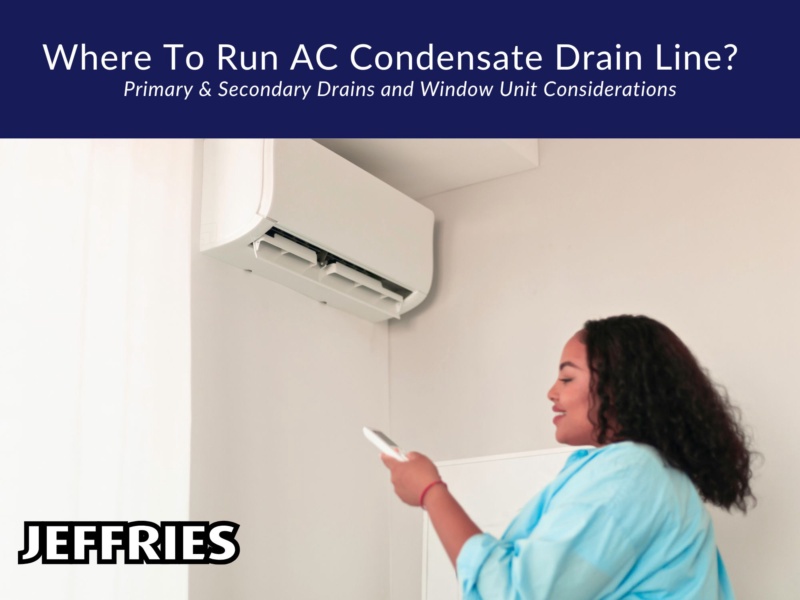Understanding where to run your AC condensate drain line is crucial for maintaining your air conditioning system's efficiency and preventing water damage in your home or business. The condensate drain line plays a vital role in removing moisture that your AC unit naturally produces during operation.
What Is an AC Condensate Drain Line?
Your air conditioning system removes humidity from indoor air as it cools your space. This moisture condenses on the evaporator coils and must be drained away from the unit. The condensate drain line is the pathway that carries this water outside your building, preventing it from accumulating inside the system or on your property.
Primary Drain Line Locations
The primary condensate drain line should run from your indoor air handler to an appropriate drainage location. Most systems direct this line to a floor drain, utility sink, or outside drain. The key is ensuring the line has a continuous downward slope to allow gravity to move water away from the unit effectively.
For central air systems, the drain line typically connects to your home's plumbing system through a floor drain in the basement or utility room. In some cases, it may run directly outside through an exterior wall, terminating near your home's foundation.
Window AC Unit Considerations
If you're wondering where the condensate line is on window AC units, these systems typically have a simpler drainage setup. Most window units are designed to drain condensate directly outside through small holes or a dedicated drain port. Some models include a removable pan that collects water for manual emptying.
Proper Installation Guidelines
When installing an AC condensate drain line, ensure the line maintains a consistent downward slope of at least one inch per eight feet of horizontal run. This gradient prevents water from backing up into your system. The drain line should be accessible for maintenance and cleaning while remaining protected from damage.
Never run your condensate drain line into a septic system, as this can disrupt the bacterial balance needed for proper septic function. Instead, direct it to a suitable drainage area away from your home's foundation.
Secondary Drain Line Importance
Many modern HVAC systems include a secondary condensate drain line as a backup. This safety drain typically routes to a visible location, such as above a window or door, to alert you if the primary drain becomes clogged. When water appears from the secondary drain, it indicates your primary line needs attention.
Maintenance and Troubleshooting
Regular maintenance of your condensate drain line prevents costly water damage and system failures. Check the line periodically for clogs, algae growth, or debris that might block proper drainage. Signs of drain line problems include water pooling around your indoor unit, musty odors, or water damage near your HVAC equipment.
Professional Installation Benefits
While some homeowners attempt DIY condensate drain line installation, professional installation ensures proper sizing, slope, and connection to your home's drainage system. HVAC professionals understand local building codes and can identify potential issues before they become problems.
Contact us today at Jeffries Plumbing, Heating, and Air for expert assistance with your AC condensate drain line installation and maintenance in Lamar, Missouri and surrounding areas.
